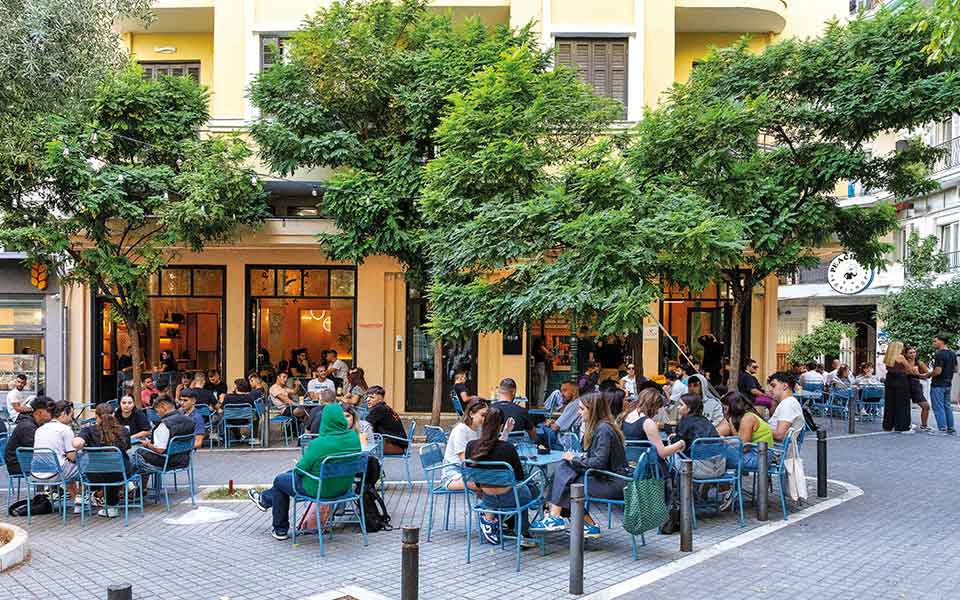Even though it’s been ten years, I remember everything: It was the first time I took a bus without my parents and arrived in “Navarinou City”; the sight of the sea alone caused me to let out my first cry of freedom. It was a feeling similar to “diving” into the books of small bookstores for the first time; exploring the microcosms along Dimitriou Gounari Street or the nearby alleys that led to a deserted square (which didn’t look like a square) and to streets that felt like promenades.
Ten years later, the square is bustling. Delliou Street, which was once abandoned, has been “rediscovered” by Thessalonians and has become the city’s new hotspot. The pedestrian areas of Filikis Eterias and Theohari Streets, which surround the square that doesn’t look like a square, form an ecosystem that doesn’t threaten the popularity of Gounari Street but maintains its own character, just behind the identical apartment buildings that steal the show from the Galerius Palace.
This is the universe of Hippodromiou Square.
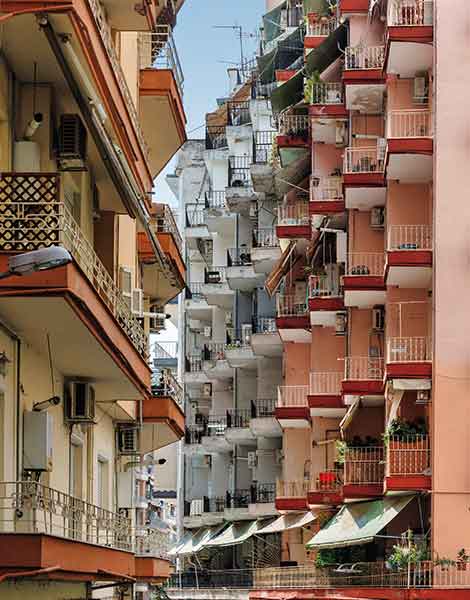
© WONDERFUL FUN
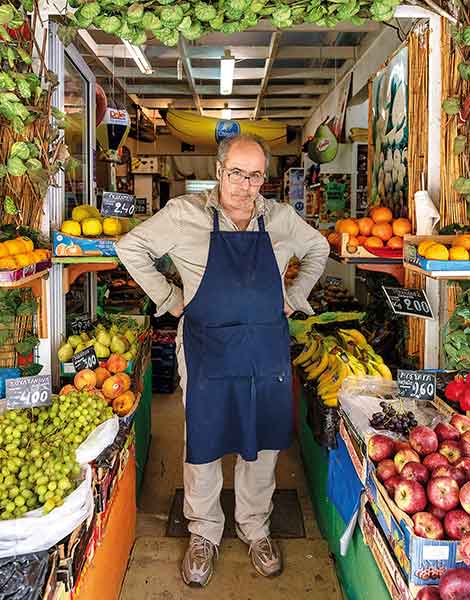
© WONDERFUL FUN
A Large Square
Hippodromiou Square and its surrounding streets move at a different pace than the rest of the Historic Center. Calm, almost Zen-like, without the honking and arguments over double parking that can be heard on the main streets that surround the neighborhood (Egnatia, Ethnikis Amynis, Tsimiski, and Gounari), or on Alexandrou Svolou Street, which runs through its middle. Walking down Agapinou Street from Egnatia, the eye is first drawn to the balconies of the apartment buildings that line the curve of the street. On the right is the area’s pocket park, an undeveloped plot of land that was turned into a park by a citizens’ collective. A street lined with palm trees extends past Mr. George’s fruit shop, whose fruit adds color to the uniform grey of the concrete.
Thessalonian disclaimer: Hippodromiou “Square” is not a square, in the sense that it lacks benches, a park, or a recreational area. It is simply a street that could have been a large square. It is also associated with Byzantine, medieval, and modern urban legends.
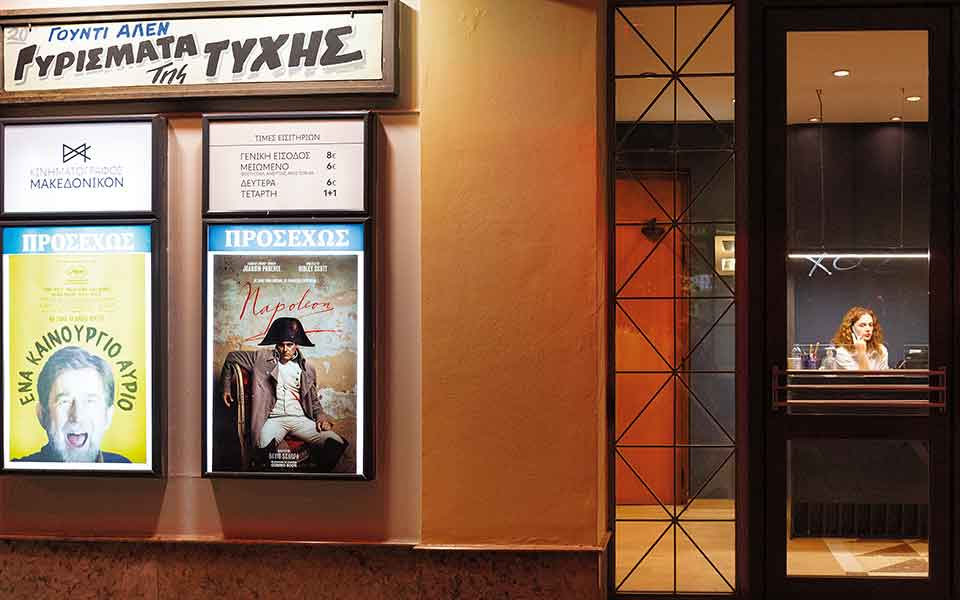
© WONDERFUL FUN
The Curse
“The square is associated with the urban legend of the ‘bleeding stone,’ a marble pillar that is said to have oozed the blood of the thousands of Thessalonians slaughtered in the Roman arena following the 390 AD uprising against Theodosius I’s economic edicts,” explains Nikos Marantzidis, a historical researcher at the Thessaloniki History Center. Centuries later, in the 1970s, this urban legend resurfaced among residents. However, prior to the 70s, there were no traces of the city’s historical past in Prodromi (a corruption of the word “Hippodrome”).
“After the 1917 fire, the Hébrard Plan called for the restoration of the Roman Hippodrome, but aside from the development of Aristotelous Avenue and the Galerian complex, nothing else came to fruition except for shanties, workshops, and the Serbian church of Saint Sava. All of these were demolished over time to make way for apartment buildings.”
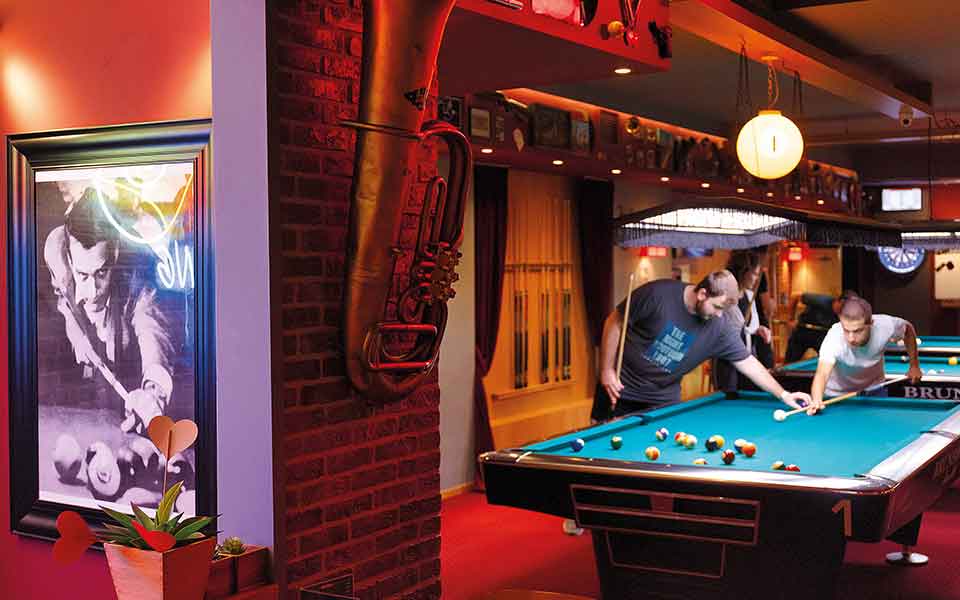
© WONDERFUL FUN
As for the night of June 20, 1978, I remember my sixth-grade teacher telling us how they were watching the crucial World Cup qualifier between Argentina and Brazil with some relatives who lived in the apartment building at the southern end of Hippodromiou Square, when, just after eleven at night, a rumble went through the city: a 6.5 magnitude earthquake sent Thessaloniki’s residents into the streets, causing enormous damage to buildings, and forcing residents in various areas of the city to evacuate.
However, the only building that completely collapsed was the apartment building at the southern end of Hippodrome Square. As a result, the old Thessalonians remembered the story of the “stone” and the “curse” that once haunted the square. The Billis Building, which houses the Thessaloniki History Centre and the city’s municipal archive, was built on the site soon after.
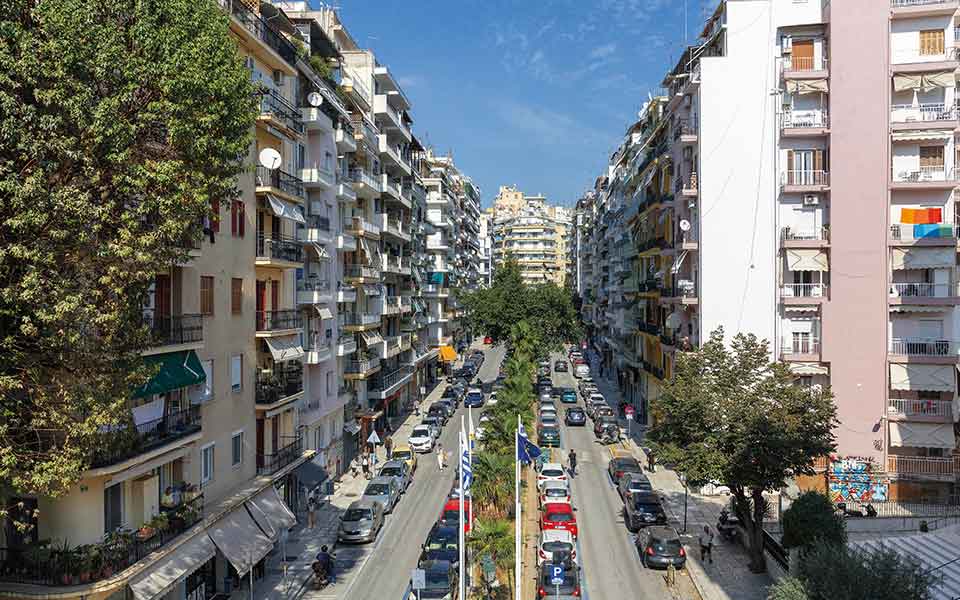
© WONDERFUL FUN
Central but not Quite
I enter Michalis Potolias’ traditional bookbinding workshop, a small basement studio in the middle of the square, opened by his father in 1979. I ask if he has noticed any changes in the neighborhood over time. “With the exception of the apartment building that collapsed during the earthquake, there have been no significant changes in the neighborhood. I still see the same buildings I did when I was a child. And it’s quiet,” he says as he works on the pages of a Gospel. “After all, we were always in the shadow of Navarinou.
We are in the heart of Thessaloniki, but not quite. Despite this, there were stores for everything. There was a time before the economic crisis when you couldn’t find an empty space to open a shop; the entire street was occupied.” And what about during the crisis? “Ten stores remained out of forty. The street looked like something out of a Western film. The only thing missing were the tumbleweeds,” he jokes. “Some were swallowed by the market and didn’t survive, but although some remain closed, new ones have been appearing for the past eight years, like the nail art studio, various galleries, and second-hand clothing shops.”
A little further north, I meet siblings Alexandra and Antonis Kastanidis at the table they have set up outside Elephant Gang, the vintage clothing store they opened in 2016. “When we first came here, it was just us. But we saw the area’s potential because of its proximity to Navarinou. The neighborhood gradually filled with students, and people got to know us,” Antonis says. If two or more of these shops opened in another part of town, the street would become the new talk of the town, and Airbnb wouldn’t be far behind. Is this also true in this case? “We have seen that some apartments have become Airbnbs and there are tourists who stay here for a few days.”
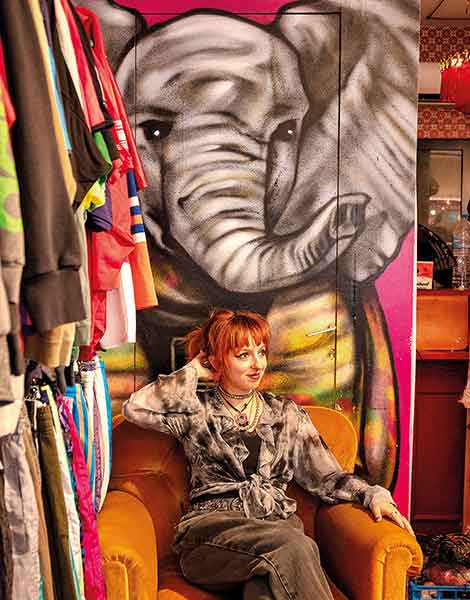
© WONDERFUL FUN
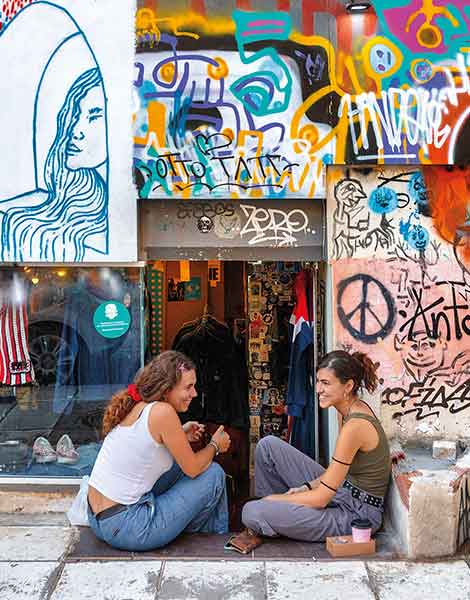
© WONDERFUL FUN
Pedestrian Streets Filled with Music
“I am looking for a house to rent in this building (because it is really nice),” reads a note taped to the front door of a building with a phone number below. Some tourists peer through the dusty window of an abandoned shop. There is a piano, a bookshelf, and some paintings inside. No one knows what this place used to be, not even Tasos Theodorakis, who is building an oud in his workshop just down the street. The smell of wood fills the air as he opens the door. “I am no longer aware of the smell. It barely lasts for a few seconds when I return from vacation, and then it’s gone again,” says Mr. Theodorakis, a luthier who specializes in making ouds, lutes, and lyras.
His store has been here since 1999, but unlike other businesses, he caters to a specific clientele and doesn’t rely on foot traffic. However, this does not mean that he is unconcerned about the current situation. “They said it would eventually become a proper square without cars, with only a narrow lane for supply trucks. That would have been great for the shops and for the children who don’t have anywhere to play. None of this happened. The worst part is when foreign tourists ask me where the Hippodrome is. I show them the cars and the palm trees. ‘That’s it.’ There is only one sign indicating that this was once an arena.”
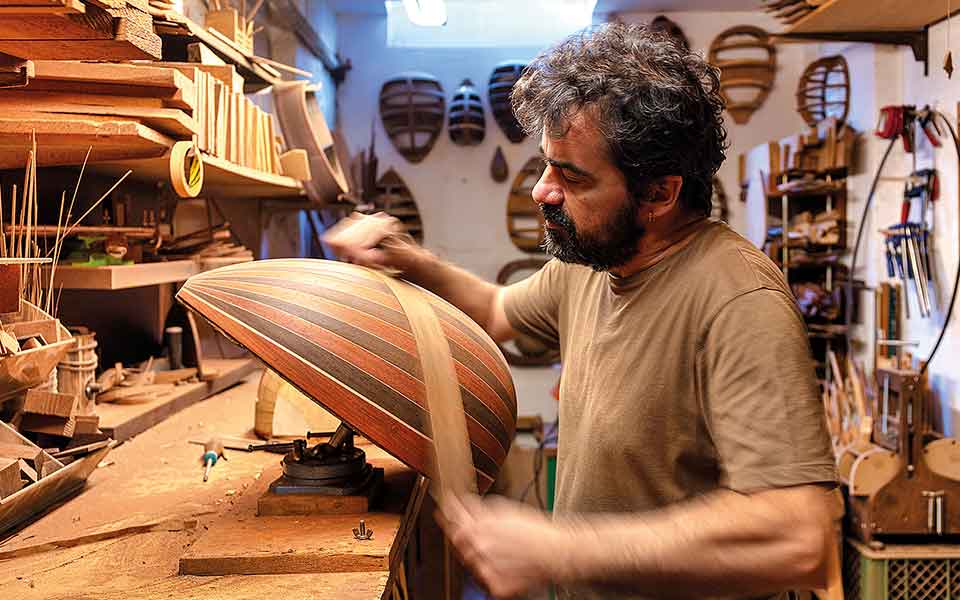
© WONDERFUL FUN
G. Theohari Street, which begins next to the Church of Saints Constantine and Helen and ends at Tsimiski, is an 80m-long pedestrian street. Rubiks, a recently opened brunch restaurant, has drawn people back to this small central pedestrian street, keeping it busy even late at night. Manolis Emmanouilidis’s heavy metal record store Alone, which he has run since 1995, is directly across the street. He recalls that, 30 years ago, there was always a crowd on Saturdays. “There used to be four record stores within five blocks of each other. Every Saturday, people would go from one store to another. Thessaloniki has always been ahead of Athens in terms of music. Most of my customers are in Athens, and the fact that they have to come to me for the latest thing indicates that not everything is available there.”
However, he does not appear to have been affected by the crisis. “Consider this: just before you, a fifteen-year-old boy came in with his mother, asking for a Slayer record. Metalheads will always be there because they love music.”
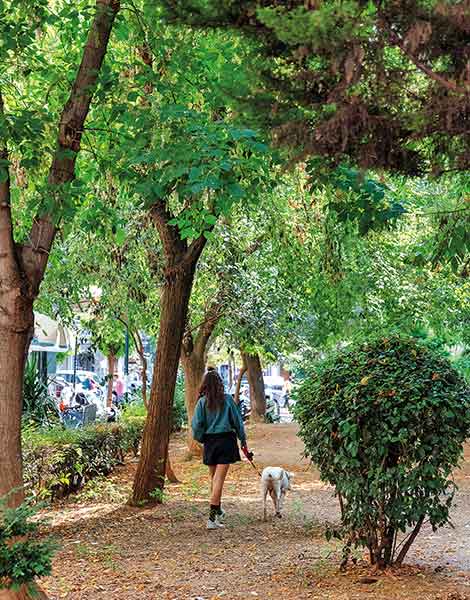
© WONDERFUL FUN
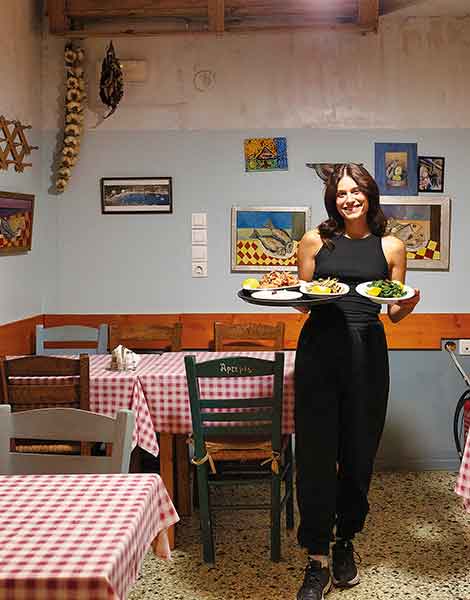
© WONDERFUL FUN
Rendezvous at Delliou
People stroll along Filikis Eterias’ semi-pedestrian street as dusk falls. Some stop to take pictures with the White Tower in the background. Filmgoers gather outside the Makedonikon cinema, which is hosting screenings for the 64th Film Festival. The city’s youth have only recently discovered Ioannou Delliou Street at the top of Filikis Eterias. It was previously known only as “UNICEF alley,” because it housed the UN children’s organization’s store. Then, Kafeneio Minion opened right across from the colorful Tarti taverna. Next door, Yafka, a book-lover’s haunt, hosts reading clubs and theatrical events.
Further down, trendy Peach Boy is the new hot spot recommended by friends in Thessaloniki. “I’ve passed by here every day for years, but I never noticed this alley. It will be hard for me to get tired of it,” says Lina, a friend who suggested we meet under the trees on the promenade, where locals walk their dogs. Login, the pool hall on Kamvounion Street, encapsulated the area’s history before the new shops opened. Dimitris Logginidis, one of the pool industry’s oldest entrepreneurs, transformed a seedy café into Thessaloniki’s first hangout, a favorite haunt of generations of students, in 1985.
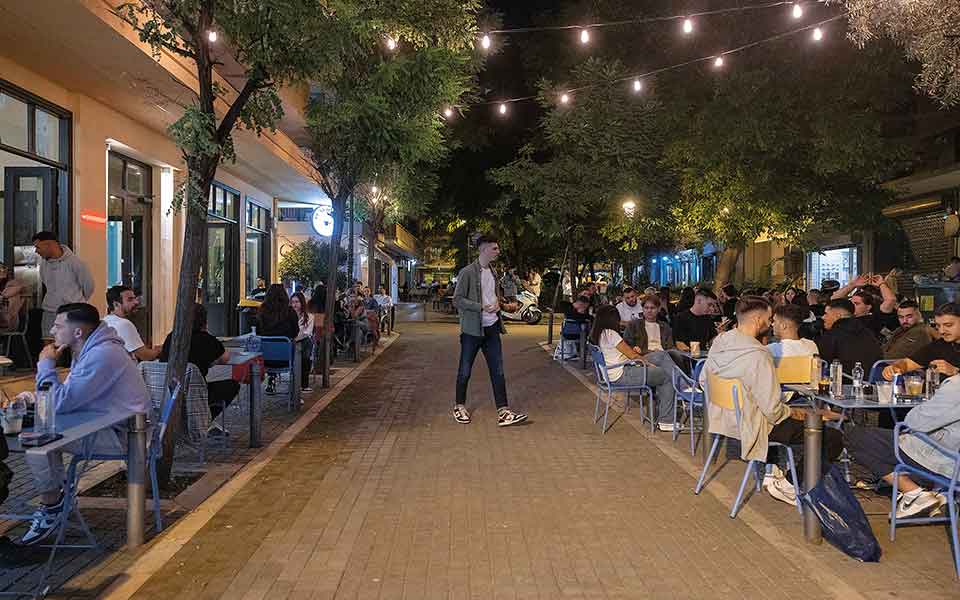
© Alexandros Avramidis
Over the years, many athletes have practiced for tournaments there, and nearly every eighteen-year-old in the city has tried their luck at Login’s pool tables at least once. Now his sons run the shop, but he is still there, noting that “it’s not just students who come here. On Saturdays, I even have reservations from middle-aged professionals, doctors, and judges who come here with their children and grandchildren; it’s how they unwind.”
Walking out of Kamvounion onto Egnatia Street, the noise returns. The traffic and constant maneuvering on the narrow pedestrian streets can be exhausting, but the contrast is rewarding: on the one hand, the leisurely pace of the hidden universe of Hippodromiou Square, and on the other, bustling Navarinou, which gives the impression of a city that sleeps very late, or perhaps not at all, on Saturdays. It’s contrasts like these that form part of Thessaloniki’s vibrant identity.
This article was previously published in Greek at kathimerini.gr.

